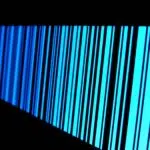National Barcode Day, observed on June 26 every year, commemorates a historical event in retail culture on which a product had its Universal Product Code (U.P.C.) scanned for the first time. On June 26, 1974, the first U.P.C. which was on a pack of Wrigley’s Juicy Fruit gum, was scanned at a grocery store in Troy, Ohio in the United States. It became a momentous achievement for the grocery industry and to date, remains one of its best innovations yet.
History of National Barcode Day
In 1932, American Wallace Flint proposed a system for automating store checkout using punched cards. Following that, Bernard Silver and Norman Joseph Woodland, a graduate student at Drexel University — formerly Drexel Institute of Technology — developed a code to fulfill Flint’s idea, and they applied for a patent on the code in 1949. North American railroads began experimenting with multicolor bar codes for tracking railcars in the 1960s and 1970s. However, the system shortly became obsolete and was replaced by a radio-based system known as Automatic Equipment Identification (A.E.I.).
The Uniform Product Code Council (U.P.C.C.) was established in 1973, and it contributed to the definition of the numerical format that comprised the Uniform Product Code. Following this development, companies in the technology sector began to provide alternatives to symbol representations. One of these variants was the one created by I.B.M.’s George J. Laurer, which incorporated a minor change to the beginning symbol. This design was eventually chosen as the alternative.
On June 26, 1974, a 10-pack of chewing gum was purchased at the Marsh supermarket in Troy, Ohio, and went on to become the first U.P.C.-marked grocery product in American history to be scanned successfully by a barcode. To date, there is a fax of the transaction on display at the Smithsonian.
National Barcode Day timeline
Wallace Flint introduces the idea of an automated checkout system for products.
Bernard Silver and Norman J. Woodland patent the idea for the code they developed years earlier.
The Uniform Product Code Council (U.P.C.C.) is founded.
A supermarket in Troy, Ohio, United States successfully scans the barcode on a pack of fruit chewing gum, marking a momentous point in the grocery industry.
National Barcode Day FAQs
What does the term 'barcode' mean?
A bar code (commonly referred to as a single word, barcode) is a small graphic of lines (bars) and spaces that is attached to retail store items, identification cards, and postal mail to identify a certain product number, person, or place.
Can barcodes be created by just anyone?
Yes. There is software designed to help create and generate barcodes for personal use.
Are barcodes safe?
Yes. Q.R. code technology has no security flaws and cannot be hacked.
National Barcode Day Activities
Buy some groceries
In honor of National Barcode Day, you should get some groceries. Even if it’s just so you can have the barcodes scanned.
Host a barcode party
You can host a barcode party. Get a scanner and have your guests come in with products and scan away!
Share on social media
Whatever activity you settle for on National Barcode Day, share on social media using the #NationalBarcodeDay hashtag. Social media is the best way of disseminating information nowadays.
5 Facts ABout Barcodes That You Didn't Know
First U.P.C. Scanner Installation
The first U.P.C. Scanner was installed at Marsh’s supermarket, the same place where the first successful barcode scanning was.
Barcodes were used for railroad cars
Barcodes were first used to label railroad cars in the 1960s and 1970s, the system was however short-lived.
Special optical scanners for barcodes
Barcodes can only be scanned by special optical scanners designed to read barcodes.
Successful scan rate
Barcodes have a 99.9% scan rate, which makes them an extremely successful innovation.
Q.R. Codes On Gravestones
In Seattle, Washington, United States, there are Q.R. codes inscribed on graves so that when scanned, information about the deceased fellow becomes available.
Why We Love National Barcode Day
It makes business more efficient
Barcodes make for the very effective and efficient running of businesses. They do so by tracking and storing information about products.
Barcoding saves time
Barcoding saves time on manual tracking and information sourcing. It makes for more productivity.
Barcodes make us feel safer
With barcodes, we know that the products we purchased are easily trackable. This comes in handy if there is ever a need to get to the source.
National Barcode Day dates
| Year | Date | Day |
|---|---|---|
| 2025 | June 26 | Thursday |
| 2026 | June 26 | Friday |
| 2027 | June 26 | Saturday |
| 2028 | June 26 | Monday |
| 2029 | June 26 | Tuesday |

















